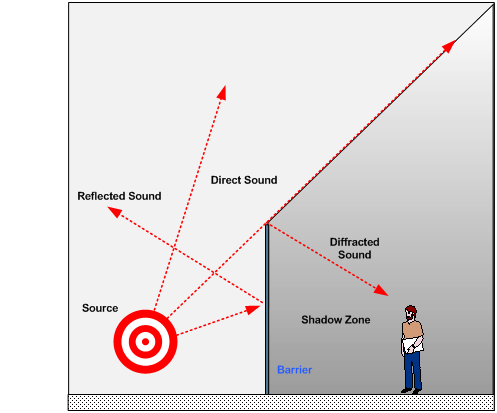The Seven Ways to Reduce Noise
When faced with a technical problem, we can easily get overwhelmed when we consider all the options imaginable as possible solutions. The art in engineering is taking a complex problem and simplifying it into one we can get our arms around. This is especially true in the field of noise control. We know there are no magic solutions, but experience has shown that a combination of methods can be used to reduce noise levels and complaints. To identify potential solutions effectively and quickly, consider these seven methods of noise control when you tackle your next problem:
1. Reduce the sound power of the source. While not always practical, sometimes “turning down the volume” is the best solution. This may be replacing a fan, compressor or other source with a quieter model, or in some cases with one that is better sized for the application.
2. Increase distance. Locating noisy equipment farther from people is obvious but not always possible. Increasing distance between the source and receiver in an outdoor environment will reduce noise by 6 dB per doubling of distance. The reduction is usually less indoors, where reflections from room surfaces lessen the effects of distance. Whether outside or indoors, it is best to locate loud sources and spaces far away from sensitive areas.

3. Use a barrier or enclosure. Walls, floors, ceilings and windows are all forms of barriers that reduce noise transmission in buildings. Equipment enclosures are common for generators and other loud sources located outside. While enclosures contain the noise, barriers cause diffraction of pressure waves and create a shadow zone where noise is lower.

4. Add absorption / diffusion. Controlling sound reflections in a room by using ceiling tiles, sound absorption panels, acoustical sprays and other materials can reduce the reverberant component of noise in the room. However, the effect is limited and large reductions in room noise level, or in transmission to other spaces outside the room, cannot be expected. Generally, if you double the amount of absorption in a room you can expect a 3 dB reduction in noise. For some speech intelligibility problems, controlling reflections that interfere with the direct speech path is more important than lowering the room noise level, and then adding absorption makes sense. Diffusion in a room causes scattering of sound and can make the absorption materials seem more effective. These principals can be extended to HVAC systems also, where duct liner and elbows are used to reduce noise that travels through lengths of duct.

5. Use masking sound. In some cases it is easiest to hide the offending noise, or “sweep it under the rug.” Masking sound can be added to a room to raise the background noise level and cover up bothersome sources. This is commonly done in open office space to reduce distractions and improve speech privacy.
6. Improve vibration isolation. A large percentage of the noise problems we encounter are really vibration isolation problems. Noise transmission between spaces in buildings almost always involves vibration. Here is an example: A transformer located in the penthouse electrical room has rubber vibration isolation pads, but they are not effective. The transformer causes vibration in the floor that propagates through the structure to walls of a conference room below. The walls vibrate, which causes pressure waves in the air (similar to a loudspeaker), resulting in undesirable noise and complaints. The best solution to reduce noise in the conference room is to improve the vibration isolation at the transformer.

Image courtesy of Mason Industries
7. Consider active control. We get asked about active noise control a lot. In a small, confined space, like a headphone, the technology works great. We are all familiar with the active noise canceling headsets from Bose and others. This has also been done in HVAC ducts, although it is not commercialized yet. Active control is significantly more difficult in a large space like a room, and unless you have a NASA size budget, don’t consider it. There is some new technology from a company in Israel that creates a quiet zone in a small volume of a larger room. This technology has been applied to headrests in cars and aircraft to improve comfort for passengers.
Consider these seven methods of noise control when faced with your next noise problem, and let the engineers at ESI know if you have any questions or need help.

